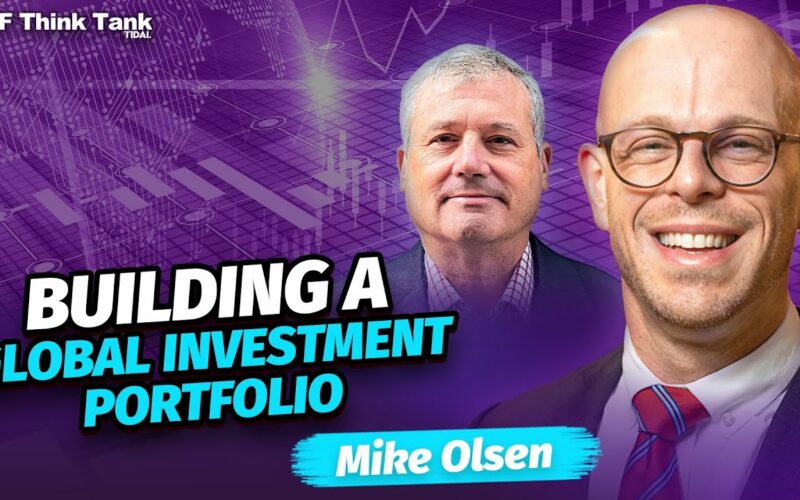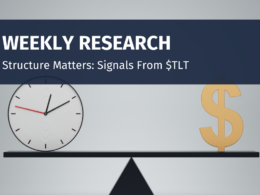This year Amplify finalized its acquisition of ETF Managers Group, taking over 14 funds with almost $4 billion in combined assets. The news was an interesting bit about M&A activity in the ETF industry, but it was also the conclusion to what’s possibly our industry’s most notorious black eye.
Many of us remember where we were when the famous – or infamous – hijacking of HACK (and its counterpart ETFs) took place. If you recall, HACK was a pioneer cybersecurity ETF – and a huge asset-gathering success – branded by PureFunds ETFs and financed by ICE Ventures. ETFMG was the white label partner that served as the advisor to HACK and a family of funds.
All was going great back in late 2014, early 2015 as HACK swam among the most successful ETF launches ever, climbing to $1 billion in assets in under a year. Following Nasdaq’s acquisition of ICE Ventures, disputes arose between Nasdaq and ETFMG regarding control and contractual obligations of the funds, as documented in legal proceedings. ETFMG essentially stopped making payments to Nasdaq for profits generated by the funds.
Nasdaq took ETFMG to court in a battle against ETFMG (and its founder Sam Masucci) that wouldn’t be short lived, but it eventually delivered a win for Nasdaq. Nasdaq was awarded almost $80 million in damages, Masucci himself had to settle a multi-million dollar fine with the SEC, and ETFMG ended up being acquired this year. (You can read about the battle here.)
The HACK event was an incredibly rare occurrence in the ETF space. As we know, ETFs are a team sport, with trust being our main transactional currency, and that leaves little room for questionable self-serving shenanigans or for an advisor to go rogue. It’s just plain bad business.
But as we turn the page, it might be an opportune time to revisit the fact that there are different paths to launching an ETF, and one of the key distinctions centers on two roles: The advisor vs. the sub-advisor.
Owning the Trust vs. Advisor vs. Sub-advisor – The Tradeoffs
There’s a prevailing notion that being an advisor is better than being a sub-advisor in the life of an ETF. From a semantics standpoint alone, the words suggest hierarchy and the difference between them is often interpreted as suggesting different levels of control.
Control of what? That’s a great question, and it depends on whom you ask. To some ETF entrepreneurs, it’s about running it all (Trust included). To some, it’s about day-to-day decision-making. To some it’s about brand dominance. Talk to two ETF entrepreneurs, and you probably wouldn’t get the same answer, but you often get the same association with the ETFMG affair: “Can someone fire me or take control of my ETF?”
In reality, the path to ETFs isn’t one-size fits all. Choosing to be an advisor or a sub-advisor ultimately is the same thing in terms of “control” unless you actually own the Trust. Both advisors and sub-advisors can get “fired” from a fund for breach of contract or fraud. Neither advisor nor sub-advisor would lose the economics of their fund (costs and profits) if ousted because those terms are dictated in a “platform services” agreement. The experience is similar, but the costs and responsibilities are not.
Consider three paths to launching an ETF:
- DIY the whole thing as an Advisor who owns the Trust
You have an ETF idea, you own it, and you want total control. You can do it all yourself as the advisor, building your own infrastructure. That means you must own the Trust, which would probably come with at least a $200,000 startup cost, months of work, and about $350,000 a year of expenses thereafter.
Operating as an advisor with ownership of the Trust provides the potential for significant influence over the board of directors; you’d own all the economics, and you’d be on the hook for all the operational headaches – staff, processes, insurances, fiduciary requirements, legal reviews – risks and responsibilities. You’d be on the hook for it all.
Perhaps the biggest pro of this approach is control. The con is clearly cost and time. You may also potentially lack benefits of scale, which could be key to access wirehouse/broker-dealer distribution.
- Be an Advisor who uses someone else’s Series Trust
You want to be an advisor, but you don’t want to own the Trust, so you use someone else’s. For you, that means fewer external expenses (associated with the Trust) but plenty of internal costs. You’d be responsible for a lot of operational tasks such as reporting to the board, compliance, trading. As the advisor, you’d have to have your own board reporting, accounting, vendor management, capital markets relationships, trading systems, fund compliance system, and lead market makers.
You wouldn’t have control over the Trust – and its trustees – but you would still have to handle all the operational work of the day-to-day life of an ETF. The pro is it would cost you less than doing it all yourself – probably around $190,000 a year – but the con is your workload is massive for no perceived benefits of control. You may also not be able to benefit from scale and lower aggregate fees depending on the Trust arrangements.
If you are an advisor to a Series Trust, you are responsible for all the expenses of the fund, but you keep the profits after fees.
- Be a Sub-Advisor
You could be a sub-advisor, partnering with a white label provider who owns the Trust and offers a stack of operational services. With a white label provider, you can benefit from scale and lower aggregated fees. You’d still be looking at the cost of running an ETF that nears $240,000 a year, but profits after fees are yours based on your platform agreement. In this scenario you are responsible for the active management and raising the assets, most of the operational and fund compliance tasks are handled by the service provider.
Unique to ETFs
The role of a sub-advisor can be confusing to those new to ETFs since it is very different from the way the term is used in the Mutual Fund world.
There are two types of sub-advisors:
- the active sub-advisor who is the brand and face of the product,
- the execution sub-advisor who handles portfolio managements, trading, and capital markets.
In a white label context, you could frame the difference as between being a client or a service. A new issuer acting as an active sub-advisor is similar to how things would work in the Mutual Fund world, but the economics and ownership of the revenues are not based on the role of sub-advisor, but rather the platform services agreement.
The second concept of a sub-advisor for ETFs is the service of handling trade execution, basket management, heartbeat trades, and capital markets. This is unique to the ETF world in that it requires systems and relationships that are expensive and hard to curate. Most white label providers have this service in house.
ETF Biz Models
We’ve learned over the years how sticky a bad memory can be. HACK’s troubles at the hands of ETFMG still elicit some nervousness around the idea of ownership and control of an ETF. In truth, outside of owning your own Trust, both advisors and sub-advisors face similar operational and cost hurdles to entering the business.
What really matters is the contracts put in place – the platform service agreements. Agreeing to be the advisor or sub-advisor without an iron clad platform agreement is a mistake.
Anyone looking to launch an ETF can rest assured no one wants a repeat of ETFMG’s ordeal. This is an industry that prides itself for transacting in trust, and it’s probably a good sign that we can count on one finger the number of times we’ve seen an ETF being hijacked.
The process of launching and managing an ETF isn’t universal, and it involves a range of operational work, staffing needs, and cost considerations. Define what’s important to you, choose your model, partner up wisely, and read the contracts. Do that, and operational success should follow your ETF journey.
Disclosure
All investments involve risk, including possible loss of principal.
The material provided here is for informational purposes only and should not be considered an individualized recommendation or personalized investment advice. The investment strategies mentioned here may not be suitable for everyone. Each investor needs to review an investment strategy for his or her own particular situation before making any investment decision.
All expressions of opinion are subject to change without notice in reaction to shifting market conditions. Data contained herein from third-party providers is obtained from what are considered reliable sources. However, its accuracy, completeness, or reliability cannot be guaranteed.
Examples provided are for illustrative purposes only and not intended to be reflective of results you can expect to achieve.
The value of investments and the income from them can go down as well as up and investors may not get back the amounts originally invested, and can be affected by changes in interest rates, exchange rates, general market conditions, political, social, and economic developments, and other variable factors. Investment involves risks including but not limited to, possible delays in payments and loss of income or capital. Neither Tidal nor any of its affiliates guarantees any rate of return or the return of capital invested. This commentary material is available for informational purposes only and nothing herein constitutes an offer to sell or a solicitation of an offer to buy any security and nothing herein should be construed as such. All investment strategies and investments involve risk of loss, including the possible loss of all amounts invested, and nothing herein should be construed as a guarantee of any specific outcome or profit. While we have gathered the information presented herein from sources that we believe to be reliable, we cannot guarantee the accuracy or completeness of the information presented and the information presented should not be relied upon as such. Any opinions expressed herein are our opinions and are current only as of the date of distribution, and are subject to change without notice. We disclaim any obligation to provide revised opinions in the event of changed circumstances.
The information in this material is confidential and proprietary and may not be used other than by the intended user. Neither Tidal nor its affiliates or any of their officers or employees of Tidal accepts any liability whatsoever for any loss arising from any use of this material or its contents. This material may not be reproduced, distributed, or published without prior written permission from Tidal. Distribution of this material may be restricted in certain jurisdictions. Any persons coming into possession of this material should seek advice for details of and observe such restrictions (if any).












